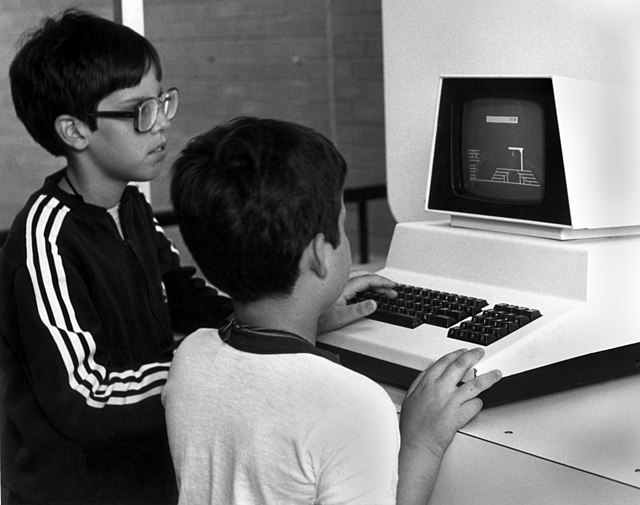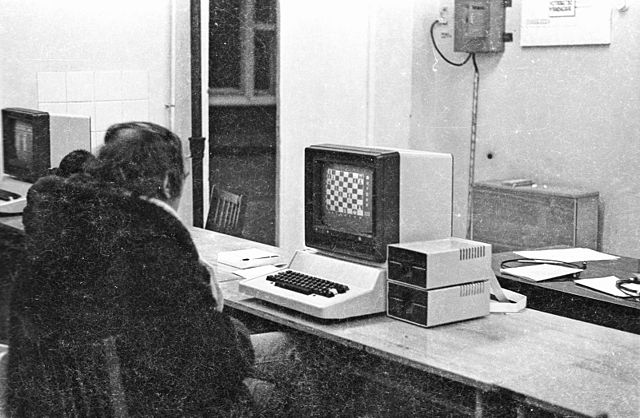The Amiga 1000, also known as the A1000, is the first personal computer released by Commodore International in the Amiga line. It combines the 16/32-bit Motorola 68000 CPU which was powerful by 1985 standards with one of the most advanced graphics and sound systems in its class. It runs a preemptive multitasking operating system that fits into 256 KB of read-only memory and was shipped with 256 KB of RAM. The primary memory can be expanded internally with a manufacturer-supplied 256 KB module for a total of 512 KB of RAM. Using the external slot the primary memory can be expanded up to 8.5 MB.
Amiga 1000 with 1081 monitor
Jay Miner's signature from the top cover of a Commodore Amiga 1000 computer. The paw print is that of Mitchy, Miner's dog.
Rear view of the A1000
A personal computer, often referred to as a PC, is a computer designed for individual use. It is typically used for tasks such as word processing, internet browsing, email, multimedia playback, and gaming. Personal computers are intended to be operated directly by an end user, rather than by a computer expert or technician. Unlike large, costly minicomputers and mainframes, time-sharing by many people at the same time is not used with personal computers. The term home computer has also been used, primarily in the late 1970s and 1980s. The advent of personal computers and the concurrent Digital Revolution have significantly affected the lives of people in all countries.
Commodore PET in 1983 (at the American Museum of Science and Energy), an early example of a personal computer
The 8-bit architecture Pravetz 82 computer produced in Bulgaria from 1982, in a classroom in the Soviet Union
Altair 8800 computer
The three personal computers referred to by Byte Magazine as the "1977 Trinity" of home computing: The Commodore PET, the Apple II, and the TRS-80 Model I.







